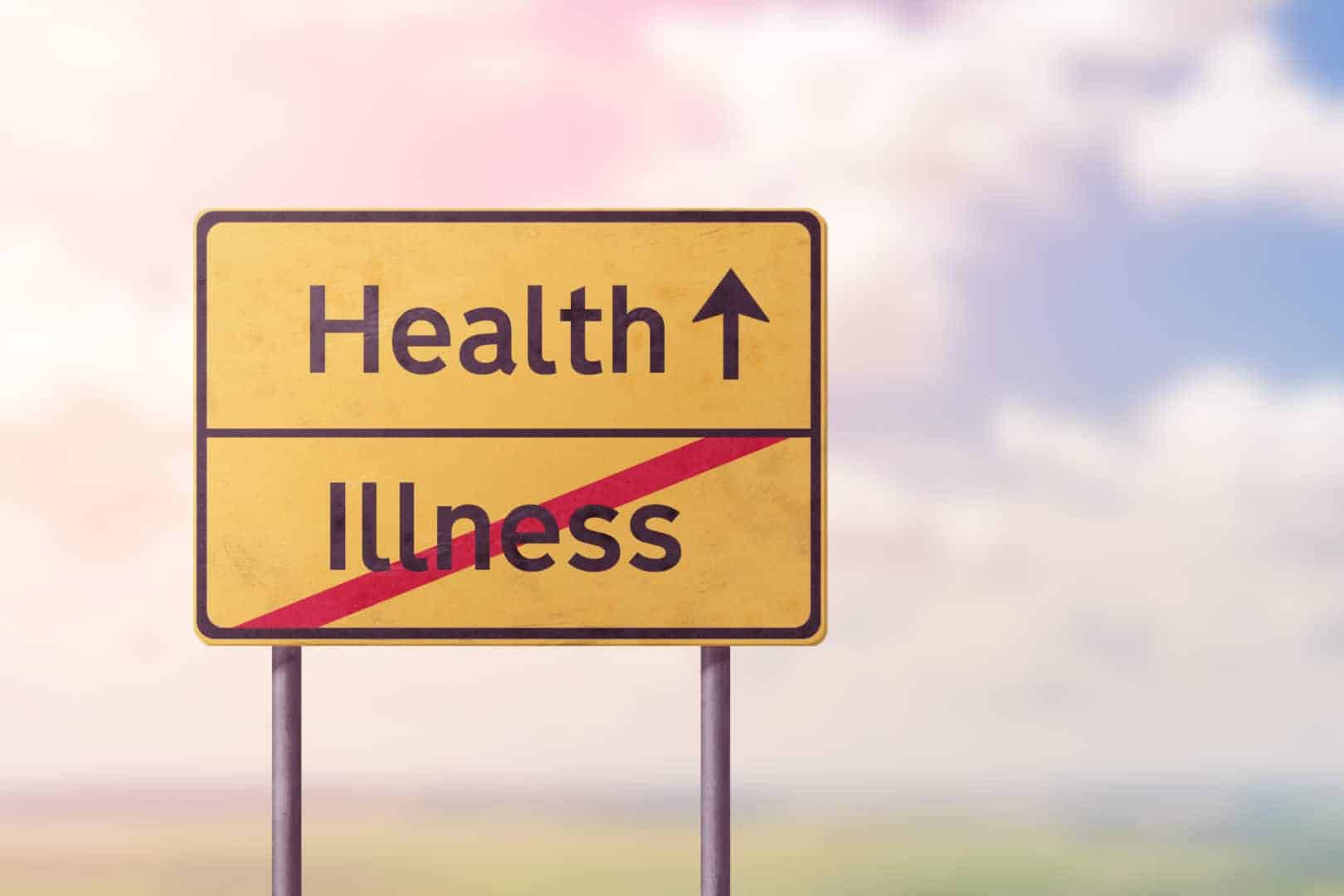– Dr. John Demartini, Researcher, Author, & Educator And it wasn’t until my gut issues/autoimmune issues began that I was forced to really, truly explore this further. As time went by and the symptoms did not clear up but rather intensified, my anxiety and fear of the future heightened as well. I couldn’t keep minimizing what was happening. It freaked me out to see my body expelling blood and mucous daily. I needed answers. I needed to understand every layer and level of what was going on with my body and psyche. So I looked for answers outside of myself. First, I turned to the conventional medical community thinking they had the answers because 1) the ins and outs of my body and its functions were completely foreign to me, and 2) they were the socially accepted trained professionals. But when I realized they were more focused on treating the symptoms, rather than identifying the root causes, I knew I had to continue my search for answers outside of this particular box. I didn’t want to buy into the paradigm that “there was nothing to do but go on meds.” So I explored Traditional Chinese Medicine, Yogic Energetic Principles & Philosophies, Functional Medicine, and Functional Nutrition. Diving into these realms helped me understand how seemingly unrelated factors might be contributing to my situation. I learned there were different layers underneath my physical symptoms – energetic, emotional, and mental layers that also needed to be looked at and considered. A big turning point came when I experienced a shift regarding my anxiety and gut problems. Instead of viewing both “issues” as punishment or a burden to carry, what if they were gifts presenting themselves as protection and preparation for something bigger? And what if I had more control over my own healing than I thought? We all carry physical or emotional trauma, visible and invisible wounds. Emotional pain is as much a part of the human experience as is emotional joy. Like yin and yang, they both complement each other. Unresolved traumatic events and repressed emotions eventually manifest as: – nervous system imbalances such as anxiety and PTSD* (post-traumatic stress disorder) – physical health problems such as high blood pressure and heart disease – a comprised immune system and even autoimmune disease (which is now known to be impacted by stress levels) Keep reading to discover 5 yoga practices that can help accelerate healing and wellness. But first let’s discuss healing, emotions, and perceptions…
How Do We Begin The Healing Process?
Healing means to ‘make whole’ so really the first step is to turn inwards and focus on our world within. – Tori Amos Our inner world creates our outer world and it’s often overlooked and neglected. We tend to get so carried away by what’s going on outside of us that we forget how much power we possess inside. This is where the yogic practice of Pratyahara comes in very handy. Pratyahara is the art of withdrawing the senses from the external world and bringing our attention inward. It’s about finding the silent space within so we can hear more, know more, see more, do more and heal more.
The Role of Negative Emotions in Healing:
The Mind-Body connection is real. – Louise Hay Research shows that chronic emotions such as anger, resentment, and guilt negatively impact the functioning and balance of your body and its systems. One study found that healthy people who get angry often have a 19% increased risk of heart disease as compared to calmer people. (1) Another study found a connection between negative emotions and a weakened immune system. (2) This is concerning since immunity is what keeps us from getting sick in the first place.
If we look at emotions as “energy in motion” (e-motion) then each emotion has its own vibrational frequency. Higher frequency emotions such as love, gratitude, and inspiration are regenerative and strengthen the body. Lower frequency emotions such as those mentioned above are degenerative and weaken the body. It takes a healthy dose of self-awareness, self-study, self-care, and self-help to really look inwards (pratyahara) and take stock of our emotional landscape. The more familiar and comfortable we are with our emotions (even the uncomfortable ones) the more healing power we’ll have.
The Role of Our Perceptions In The Healing Process:
According to the groundbreaking work of Dr. John Demartini, the way you perceive your life may be making you ill or well. If you see a synchronicity of support and challenge simultaneously, you get wellness. …Illness is a feedback system to your conscious mind to let you know that you have one or more lopsided perceptions. Your psyche and its misperceptions are creating symptomology and this symptomology is not something that is bad, evil or wrong. It is just your body’s way of letting you know that you are imbalanced in your thoughts. The second you balance your mind, your physiology changes. Your psyche and your soma (body) are working together and are designed to have homeostasis (balance) which is a negative feedback system to bring your mind back into equilibrium. – Dr. John Demartini, Researcher, Author, & Educator According to his research, our perceptions play a crucial role in determining whether we are healthy or sick. A change in perspective, he says, can often be just the thing to accelerate healing.
In an article titled How Perceptions Impact Your Physiology, he explains how the way we perceive our world impacts our metabolism and physiology (body function) which is activated or deactivated based on the initial interpretations of support and challenge. Examples of perceptions impacting body function: On blood sugar he says: On thyroid he says: Hypoglycemics tend to minimize themselves to others and can even think that they are wrong and other people are right. A hypoglycemic will often do what you tell them to do. People with diabetes, on the other hand, have high blood sugar and they tend to maximize themselves to others and tend to think that they are right. They are not easy to tell what to do and they have their own way of doing things.” So how about you? This is why its function has a direct correlation with your metabolic rate because the tongue deals with chewing, eating, swallowing and speaking. If you feel like you are saying something you wish you hadn’t, your thyroid function tends to go up. If you are not saying something you wish you could, your thyroid function tends to go down. If you are repressing what you want to say, your thyroid function goes down and your metabolic rate drops. If you are saying something you wish you hadn’t said, your thyroid function tends to go up. That is why hypothyroids are often listless, quiet and don’t speak much. They tend to hold in a lot of resentment and they hold in what they really want to say. The hyper-thyroids tend to talk and speak, and are generally more outgoing and extroverted.” How do you perceive your world? More challenging than supportive? Or vice versa? What are some limiting beliefs and misperceptions you’re holding onto that might be holding you back and making or keeping you sick? What would it take to let go of them? Do you perceive your childhood and youth to have been more challenging than supportive? Do you hold onto anger, resentments, and vindictive tendencies towards others, even if you don’t express outwardly? Could inflammatory emotions be correlated with inflammation anywhere in your body? Do you have a tendency to maximize or minimize yourself relative to others? Do you have a difficult time speaking up to say what’s on your mind? Do you habitually avoid confrontation? If we begin to ask ourselves questions like these we can begin to uncover the unconscious misperceptions that, like minimized programs on our laptop, run in the background of our awareness and affect our entire operating system. The trick is we cannot kid ourselves with the answers – we’ll have to answer honestly and quite possibly look at sides of us we’ve been avoiding or denying. This is necessary though, in order to equilibrate our bodies and minds so we can move closer towards wellness: “You are literally affecting your physiology with your thoughts if you exaggerate or minimize things; you are automatically changing your physiology, changing the blood sugar levels, changing lipid levels and hormone levels… Your hormone imbalances often have a lot to do with your perceptions of the world. If you bring your imbalanced awareness into perfect equilibrium by asking quality questions that reveal to you the hidden part, you can normalize your physiology and your body will do amazing things and return to wellness… What I am proposing is what you may label as illness may actually be wellness. The very thing you think may be causing your illness may simply be your body’s response to misperceptions and the associated mis-actions. These lead to mis-actions; something you do too much or too little or you seek too much or too little. The second you bring your perceptions and actions into equilibrium, it is amazing what your physiology can do to return to wellness,” says Dr. Demartini.
5 Yoga Practices For Healing & Regeneration:
1- Ahimsa (Self-Compassion)
Yogis practice ahimsa (which traditionally means non-harm) as a basic foundation to what we normally consider yoga – the poses. – Jack Kornfield It’s relatively easy to practice ahimsa towards others but tends to be more challenging towards ourselves. Think of ahimsa as a practice in benevolence and good intentions. We can accelerate our healing process by learning to be good to ourselves and by becoming our own best friend. So how can you show yourself more kindness today? Ask your body what it needs and stop to truly listen.
2- Tapas (Strengthening by Heat)
Tapas is the practice of burning off impurities by embracing heat, pain, and challenge. Pain can be a great teacher and a catalyst for growth and transformation… If we can stay present with the discomfort. This is not the easiest of yoga practices but it is definitely a powerful one if you’re committed to mental, emotional, physical, and spiritual healing. The next time you find yourself in pain or discomfort try and widen your lens of awareness. Ask the pain: “What are you here to teach me? What can I learn from you?”
3- Svadhyaya (Self-Awareness Through Self-Study)
It’s easy to want to run away or numb from pain and discomfort, especially in moments of illness. Our emotional brains (lower minds) are literally wired to “avoid pain, seek pleasure.” But if we are committed to true healing we must learn to transcend the lower mind in order to access the higher mind and thinking brain. Svadhyaya or self-study is what can help us make that leap. Try invoking the Witness or Observer within you to notice your reactions and impulses. How do you show up when the going gets tough? How would you like to show up?
4- Ishvara Pranidhana (Surrender to What Is & Radical Acceptance)
Can you surrender to what is? Can you radically accept your current situation without needing or wanting to change it? Can you learn to be with it as it is right now? That is what this yoga practice teaches us. This is perhaps one of the hardest of practices, and yet it also offers us ultimate freedom. We lighten the load when we surrender to what is and relinquish our egoic need to control. Our bodies respond positively when the load is lightened and it is better able to function as it was intended to – with harmony, balance, and wisdom.
5- Pratyahara (Making The Inner World More Real Than the Outer World)
As we’ve seen Pratyahara is about quieting external noises so we can hear more, see more, be more, and heal more. Healing – true healing – is an inside job first and foremost. Practicing Pratyahara helps us get out of our own way so we see and perceive things through a different lens. Some practical ways to practice Pratyahara are: – Moving the body mindfully and practicing asana (yoga poses) – Practicing mantra meditation – Practicing yoga nidra meditation – Yin Yoga – Breathwork Tapas, Svadhyaya, and Ishvara Pranidhana constitute what’s known as Kriya Yoga – the yoga of action. Right action is what’s needed in order to heal and these 5 practices can help you get there. REFERENCES : (1) https://www.webmd.com/balance/stress-management/features/how-anger-hurts-your-heart (2) https://www.newscientist.com/article/dn4116-brain-study-links-negative-emotions-and-lowered-immunity/








